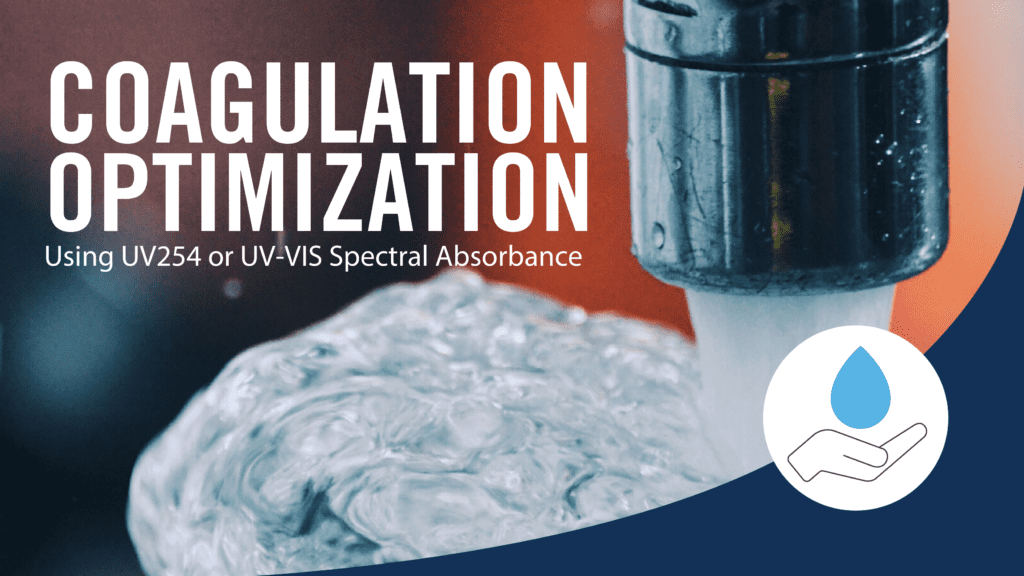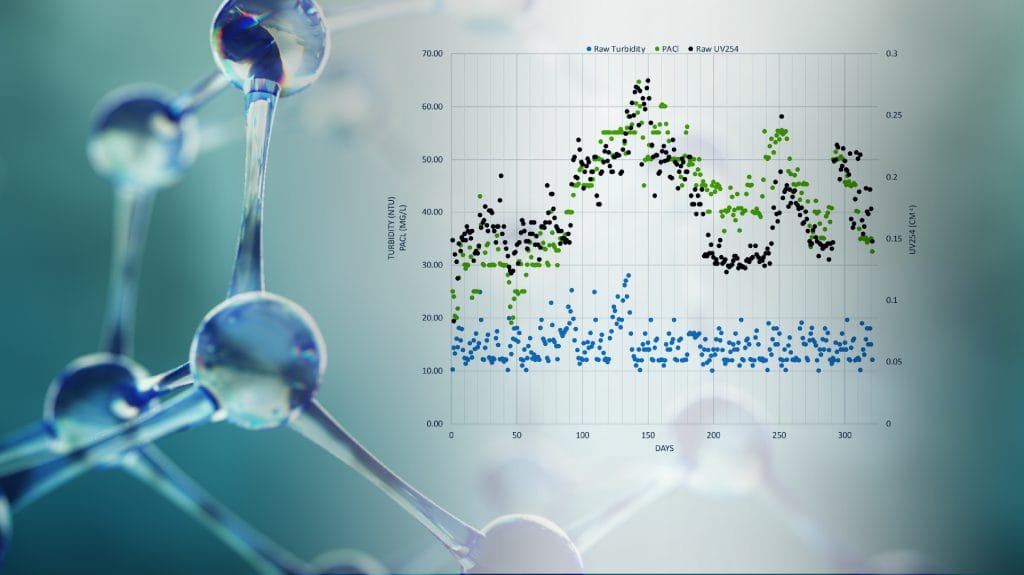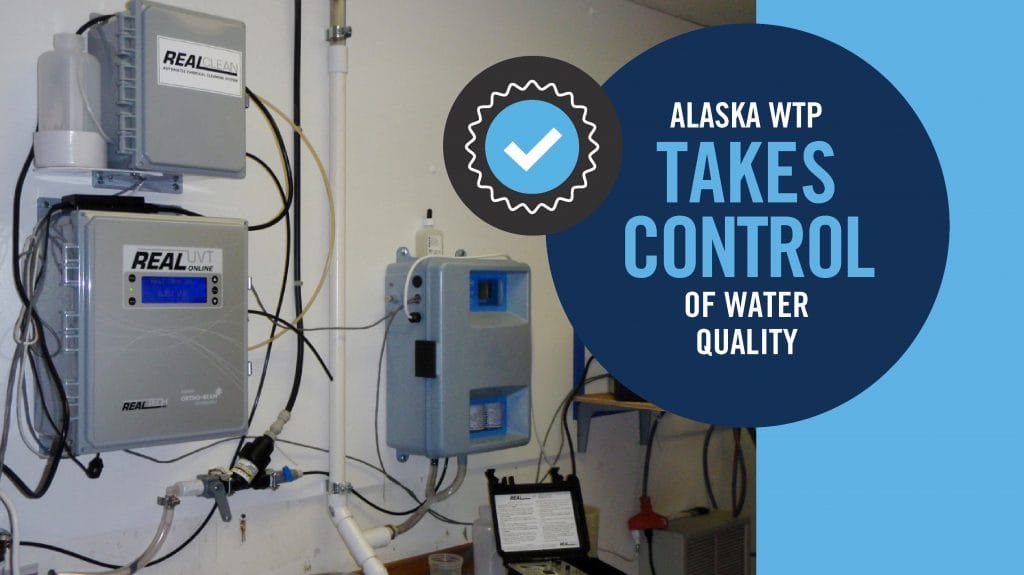ROLE OF NATURAL ORGANIC MATTER IN DRINKING WATER TREATMENT
Natural organic matter (NOM) in source water is a complex mixture of many carbon-based compounds that result from the breakdown/decay of plant and animal tissue. In the water treatment industry, NOM is of particular concern for surface water treatment plants since it can produce undesirable disinfection by-products (DBPs), interferes with the performance of water treatment processes such as membrane filtration, UV disinfection, and oxidation processes, and can lead to bacterial regrowth in potable water distribution systems. A thorough understanding of the changes in concentration of NOM over time can significantly contribute towards optimizing the operation of drinking water treatment processes. With the right monitoring equipment, determining NOM concentration can be both simple and cost effective.
SOURCE WATER NOM VARIATION
Natural organic matter is almost always found in surface water and is often found in ground water under the direct influence (GUDI) of surface water. These sources tend to be more susceptible to changes in NOM due to the direct interaction these waters have with the surrounding environment. Fluctuations in organics are notably reflected during seasonal changes in climatic conditions or during weather events when rain washes organic matter into the receiving water bodies. In addition to seasonality and weather, the chemical characteristics and concentration of NOM have also been demonstrated to change from human activity (i.e. land use, upstream discharge).
EFFECTS OF NOM FLUXES ON TREATMENT PROCESSES
Changes in NOM levels day to day or week to week can make it difficult for a treatment plant to predict when and how to properly adjust treatment processes. Without the proper instrumentation to monitor NOM, plants may encounter events that compromise the effectiveness of treatment processes which can lead to additional processing costs and potential compliance violations.
COAGULATION AND DBP FORMATION
The coagulation process targets particulate and organic matter removal, therefore a flux in organic matter will increase coagulant demand. If a NOM event goes unnoticed or response is delayed, coagulant demand might not be met, causing stress on downstream treatment processes. In the events that organics aren’t sufficiently removed at the point of chlorination, there will be an increased potential for DBP formation.
MEMBRANES AND GRANULAR ACTIVATED CARBON (GAC) FILTRATION
Membranes and GAC’s are becoming increasingly popular treatment methods for organics removal organics. Elevated NOM concentrations can cause fouling of the membrane, resulting in loss of performance and a higher frequency of back washing or chemical cleaning. Similarly, GAC exhaustion will happen faster when organics are not removed sufficiently through coagulation and require regeneration faster.
UV DISINFECTION
UV disinfection systems use UV light to deactivate the DNA of harmful pathogens in water. NOM is known to absorbs light intended for pathogen radiation. Greater than expected levels of NOM will reduce the disinfection capacity of the system and require a higher dose to achieve proper disinfection.
PROBLEMATIC NOM FRACTION
Generally NOM can be divided into two fractions 1) the Hydrophilic fraction which is more soluble in water and 2) the Hydrophobic fraction which is less soluble. The hydrophobic fraction is typically made up of a large portion of humic acids in surface waters. Humic acids are highly aromatic and reactive, which is of particular importance for DBP’s. These reactive organics will more readily react with chlorine to form THM’s and HAA’s which have specific maximum concentration limits as defined by U.S. EPA regulations. Since it is difficult and expensive to measure the fractions of NOM, operators rely on indicator parameters to gain the benefits of real-time organics monitoring.
MONITORING REACTIVE NOM WITH UV254
UV254 is an organics test parameter that measures the amount of organics in water using the 254 nm wavelength. UV254 is the only organics monitoring parameter with a bias towards reactive aromatic organics, which makes it a good predictor of DBP formation and an excellent process control tool for coagulation. UV254 has many advantages over other organic test parameters such as TOC, especially when monitoring continuously in real-time. Because the instruments use UV light to measure organics, there are no reagents involved, reducing operating expenses. They are also generally much more cost effective and simpler to operate and maintain.
Monitoring the quality of incoming source water with UV254 allows operators to anticipate changes to the treatment process and react accordingly to organics variations. Monitoring UV254 can improve response time significantly allowing operators to make the necessary adjustments before the water enters the process or causes operational problems. UV254 also allows the treatment plant to monitor the overall efficiency of various organic removal treatment processes which almost always leads to both improved water quality and cost reductions.
Overall, monitoring and understanding the seasonal and weather related changes in NOM concentration will most often lead to better treatment of drinking water and a more consistent water quality.
________________________________________________________________________________________________________________________
RELATED POSTS
COAGULATION OPTIMIZATION WITH UV254 OR UV-VIS SPECTRAL ABSORBANCE
ORGANICS AREN’T INVISIBLE: A GUIDE FOR SIMPLE ONLINE MONITORING
CASE STUDY: ALASKA WTP TAKES CONTROL OF WATER QUALITY
GO BACK TO BLOG
![]()




